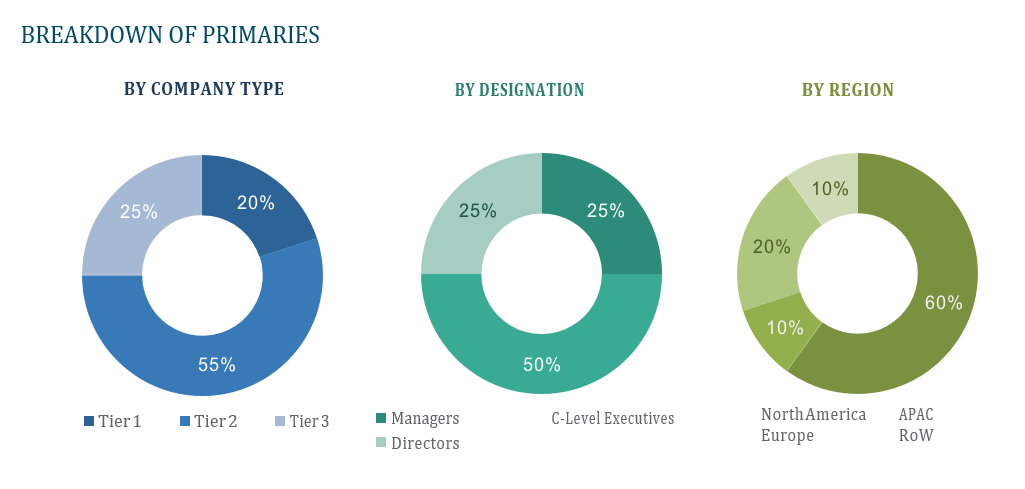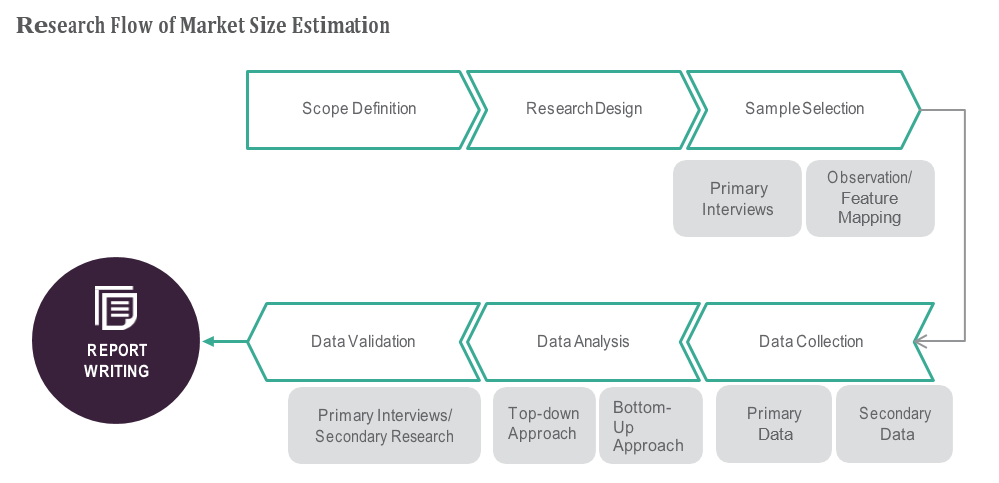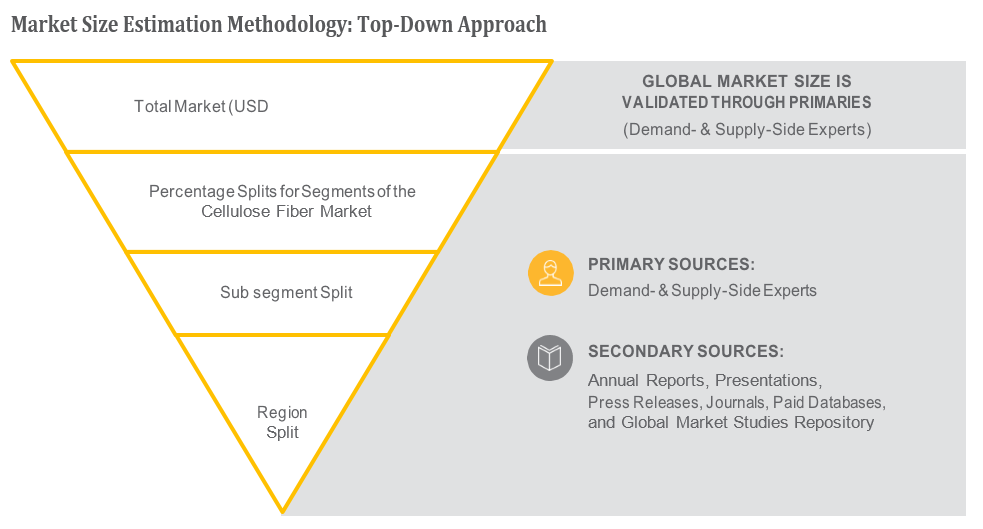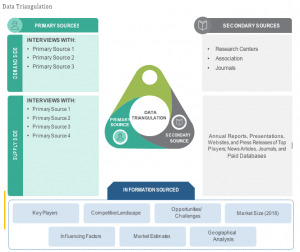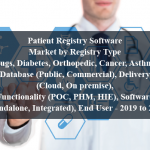OVERVIEW
The In Vitro Diagnostics Market is currently valued at USD 85.2 billion in 2024 and will be growing at a CAGR of 6.9% over the forecast period to reach an estimated USD 119.4 billion in revenue in 2029. The in vitro diagnostics market encompasses a vast array of medical devices and technologies utilized for diagnosing diseases and conditions outside the body in a controlled laboratory environment. These diagnostics play a critical role in healthcare by providing accurate and timely information for disease detection, monitoring, and treatment decisions. From simple blood glucose tests to complex molecular assays, in vitro diagnostics cover a broad spectrum of tests across various disciplines such as clinical chemistry, immunoassays, molecular diagnostics, and microbiology. This market is characterized by constant innovation driven by advances in technology, increasing demand for personalized medicine, and the growing prevalence of chronic and infectious diseases globally. With the rising emphasis on early disease detection and management, coupled with the expansion of point-of-care testing and digital health solutions, the in vitro diagnostics market is poised for continued growth and evolution in the years to come.
The increasing prevalence of chronic and infectious diseases worldwide, coupled with aging populations, drives the demand for diagnostic tests for early detection and monitoring. Secondly, technological advancements, such as the development of novel biomarkers, automation, and miniaturization of testing platforms, enhance the accuracy, speed, and accessibility of diagnostic procedures. Thirdly, the shift towards personalized medicine and targeted therapies necessitates the use of companion diagnostics to identify patients who are most likely to benefit from specific treatments. Additionally, the rising adoption of point-of-care testing solutions facilitates rapid diagnosis and treatment decisions, particularly in resource-limited settings and remote areas. Moreover, the integration of digital health technologies, including mobile health apps, wearable devices, and telemedicine platforms, further expands the reach and capabilities of diagnostic testing, enabling remote monitoring and management of health conditions. These drivers collectively contribute to the continuous growth and evolution of the in vitro diagnostics market, fostering innovation and improving patient outcomes.
Table of Content
Market Dynamics
Drivers:
The increasing prevalence of chronic and infectious diseases worldwide, coupled with aging populations, drives the demand for diagnostic tests for early detection and monitoring. Secondly, technological advancements, such as the development of novel biomarkers, automation, and miniaturization of testing platforms, enhance the accuracy, speed, and accessibility of diagnostic procedures. Thirdly, the shift towards personalized medicine and targeted therapies necessitates the use of companion diagnostics to identify patients who are most likely to benefit from specific treatments. Additionally, the rising adoption of point-of-care testing solutions facilitates rapid diagnosis and treatment decisions, particularly in resource-limited settings and remote areas. Moreover, the integration of digital health technologies, including mobile health apps, wearable devices, and telemedicine platforms, further expands the reach and capabilities of diagnostic testing, enabling remote monitoring and management of health conditions. These drivers collectively contribute to the continuous growth and evolution of the in vitro diagnostics market, fostering innovation and improving patient outcomes.
Key Offerings:
The in vitro diagnostics market offers a diverse range of key offerings aimed at diagnosing diseases and conditions accurately and efficiently. These include a variety of diagnostic tests across multiple disciplines, such as clinical chemistry, immunoassays, molecular diagnostics, and microbiology. From routine blood tests to sophisticated genetic analyses, in vitro diagnostics provide healthcare professionals with essential information for disease detection, prognosis, and treatment selection. Key offerings also encompass a wide array of diagnostic devices and instruments, including analyzers, reagents, consumables, and software solutions, designed to streamline laboratory workflows and improve testing accuracy and efficiency. Furthermore, the market features an increasing number of point-of-care testing solutions, enabling rapid diagnostic results at the bedside or in community settings, thus facilitating timely interventions and improved patient outcomes. Additionally, companion diagnostics play a crucial role in guiding targeted therapies by identifying patients who are most likely to benefit from specific treatments based on their molecular profile. These key offerings collectively contribute to advancing healthcare delivery, empowering clinicians with the tools and insights needed to enhance patient care and management.
Restraints :
The in vitro diagnostics market is likely to develop, but there are a number of significant obstacles to be aware of. The strict regulatory framework controlling the creation and marketing of diagnostic tests and gadgets is a major obstacle that can prevent smaller businesses from entering the market or from innovating. Adoption is further hampered by challenges with reimbursement and pressures on prices in healthcare systems around the world, especially for new and expensive diagnostic technology. Furthermore, difficulties in test standardisation and result interpretation may arise from the complexity and variety of biological samples, such as blood or tissue, which could result in inaccurate or inconsistent diagnosis. In addition, the COVID-19 pandemic has brought attention to supply chain weaknesses, such as shortages of essential consumables and reagents, which have hampered testing capacity and diagnostics accessibility. Adoption of new technology and investments in diagnostic infrastructure may also be restricted by budgetary restrictions and economic downturns in healthcare systems. In order to overcome these obstacles and promote innovation, increase access, and guarantee the calibre and dependability of diagnostic testing, cooperation between regulatory agencies, healthcare providers, and industry stakeholders is necessary.
Regional Information:
• In North America, the in vitro diagnostics market is characterized by robust research and development activities, technological advancements, and a well-established healthcare infrastructure. The region sees significant demand for advanced diagnostic tests and personalized medicine, driven by a high prevalence of chronic diseases and a growing aging population. Additionally, favorable reimbursement policies and government initiatives supporting healthcare innovation contribute to market growth.
• In Europe, stringent regulatory frameworks and cost-containment measures challenge market expansion, though there is a strong emphasis on precision medicine and adoption of digital health solutions.
• The Asia-Pacific region presents immense growth opportunities, fueled by rising healthcare expenditures, increasing awareness about preventive healthcare, and a burgeoning middle class. However, market growth may be tempered by diverse regulatory landscapes, fragmented healthcare systems, and varying levels of infrastructure development across countries.
• In Latin America and the Middle East & Africa, market growth is influenced by economic factors, political instability, and healthcare infrastructure development, with opportunities emerging alongside investments in healthcare modernization and the adoption of novel diagnostic technologies.
Recent Developments:
• In December 2023, Thermo Fisher launched the applied Biosystems MagMAX Dx Viral/Pathogen NA Isolation Kit and the Thermo Scientific KingFisher Apex Dx, an automated nucleic acid purification device, for the separation and purification of bacterial and viral pathogens from respiratory biological specimens.
• In November 2023, Roche launched a Elecsys Anti-HEV IgM and Elecsys Anti-HEV IgG immunoassays for the detection of hepatitis E virus (HEV) infections in countries accepting the CE mark .
Key Players:
Roche Diagnostics, Abbott Laboratories, Siemens Healthineers, Danaher Corporation (Beckman Coulter), bioMérieux, Thermo Fisher Scientific, Sysmex Corporation, Becton, Dickinson and Company (BD), Qiagen, and Bio-Rad Laboratories.
1) What is the projected market value of the In Vitro Diagnostics Market?
– The In Vitro Diagnostics Market is expected to reach an estimated value of USD 119.4 billion in revenue by 2029.
2) What is the estimated CAGR of the In Vitro Diagnostics Market over the 2024 to 2029 forecast period?
– The CAGR is estimated to be 6.9% for the In Vitro Diagnostics Market over the 2024 to 2029.
3) Who are the key players in the In Vitro Diagnostics Market?
– Roche Diagnostics, Abbott Laboratories, Siemens Healthineers, Danaher Corporation (Beckman Coulter), bioMérieux, Thermo Fisher Scientific, Sysmex Corporation, Becton, Dickinson and Company (BD), Qiagen, and Bio-Rad Laboratories.
4) What are the drivers for the In Vitro Diagnostics Market?
– The growing prevalence of chronic diseases and aging populations demand early detection and monitoring of diseases. Technological advancements, such as biomarkers and automation, improve diagnostic procedures. The shift towards personalized medicine necessitates companion diagnostics, point-of-care testing, and digital health technologies. These factors contribute to the growth and evolution of the in vitro diagnostics market, enhancing patient outcomes.
5) What are the restraints and challenges in the In Vitro Diagnostics Market?
– The in vitro diagnostics market offers various tests across disciplines, including clinical chemistry, immunoassays, molecular diagnostics, and microbiology, for accurate disease detection, prognosis, and treatment selection. Diagnostic devices and instruments streamline laboratory workflows, and point-of-care testing solutions enable timely interventions. Companion diagnostics guide targeted therapies, contributing to advancing healthcare delivery and empowering clinicians to enhance patient care and management.
6) What are the key applications and offerings of the In Vitro Diagnostics Market?
– The in vitro diagnostics market faces challenges such as stringent regulatory environments, reimbursement hurdles, and pricing pressures. The complexity of biological samples and COVID-19 pandemic have also disrupted testing capacity and access. Economic downturns and budget constraints limit investments in diagnostic infrastructure. Collaboration among industry stakeholders, regulatory bodies, and healthcare providers is needed to foster innovation, improve access, and ensure quality and reliability.
7) Which region is expected to drive the market for the forecast period?
– North America is expected to have the highest market growth from 2024 to 2029
Why Choose Us?
Insights into Market Trends: Global Market Studies reports provide valuable insights into market trends, including market size, segmentation, growth drivers, and market dynamics. This information helps clients make strategic decisions, such as product development, market positioning, and marketing strategies.
Competitor Analysis: Our reports provide detailed information about competitors, including their market share, product offerings, pricing, and competitive strategies. This data can be used to inform competitive strategies and to identify opportunities for growth and expansion.
Industry Forecasts: Our reports provide industry forecasts, which will inform your business strategies, such as investment decisions, production planning, and workforce planning. These forecasts can help you to prepare for future trends and to take advantage of growth opportunities.
Access to Industry Experts: Our solutions include contributions from industry experts, including analysts, consultants, and subject matter experts. This access to expert insights can be valuable for you to understand the market.
Time and Cost Savings: Our team at Global Market Studies can save you time and reduce the cost of conducting market research by providing comprehensive and up-to-date information in a single report, avoiding the need for additional market research efforts.


